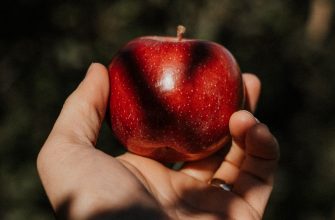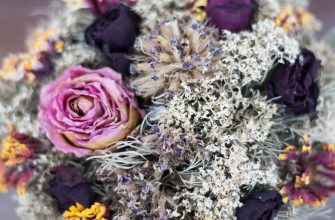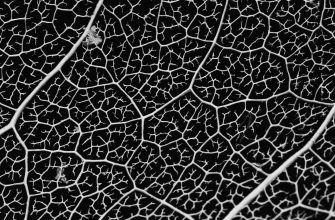Catherine Palace
The Catherine (until 1910 Great Tsarskoye Selo) Palace is a historical and compositional center of the palace-and-park ensemble. It is a remarkable edifice in the Russian Baroque style, with richly decorated interiors including the world-famous Amber Room, which was restored by the Tercentenary of St. Petersburg in 2003
The display of the Catherine Palace (known until 1910 as the Great Palace of Tsarskoye Selo) museum covers the almost 300-year history of this outstanding edifice and presents the work of architects involved in its construction and decoration in the eighteenth and nineteenth centuries and also with the achievements of the restorers who returned the palace to life after the Second World War. Of the 58 halls destroyed during the war years, 32 have been recreated.
The Catherine Palace is a historical and compositional center of the palace-and-park ensemble. It is a remarkable edifice in the Russian Baroque style, with richly decorated interiors including the world-famous Amber Room, which was restored by the Tercentenary of St. Petersburg in 2003.
In these halls you will feel the spirit of Empress Elizabeth’s and Catherine the Great’s ages. You will admire the luxury and variety of interior trims and unique furnishings. You will see the Great Hall and Golden Enfilade, the brilliant embodiments of the unmatched talent of the architect Bartolomeo Francesco Rastrelli.
The jewel of the palace is the Amber Room, rightly called a wonder of the world. Several classical interiors of an exquisite delicacy were created by the architect Charles Cameron for Empress Catherine II, her heir Grand Duke Paul and his spouse Maria. The State Study of Alexander I by the architect Vasily Stasov is one of the best Empire-style halls in Russian architecture.
The Catherine Palace is open for individual and group tours, with audio guides available.
The palace has the Children’s Creative Center that offers programs designed for our young visitors of school and pre-school age, with classes and excursions in the palace rooms, temporary exhibitions, parks and summer pavilions.
Catherine Park
The Catherine Park is made up of two parts: the Regular Park – Old Garden – and the Landscape (English) Park. The Old or Dutch Garden is said to have been begun by Peter I himself.
Whatever the truth of that, it was the Dutch master gardeners Jan Roosen and Johann Vocht who laid out the Old Garden in the 1720s on three terraces in front of the imperial palace. At that same time the Mirror Ponds were created on the third terrace and on the stream called Vangaza that flowed down the hill two more ponds: the Upper (Great) Pond and the Mill Pond (later incorporated into the system of Cascade or Lower Ponds).
In the middle of the eighteenth century the garden was enlarged, remodelled and decorated with sculpture by Bartolomeo Francesco Rastrelli, who designed the Hermitage and Grotto, and also a Coasting Hill. The great pond with a Lusthaus (amusement pavilion) on an island within it was given a hexagonal shape and surrounded by paths. Click to enlargeFinally in the 1770s Vasily Neyelov and his son Ilya constructed in the garden the Admiralty complex, the Hermitage Kitchen, the Upper and Lower Bathhouses. The Longitudinal (Cascade) Canal extended along the boundary of the garden right to the Lower Ponds, incorporating twelve weirs.
At that same time an English landscape park was laid out in the area to the south of the palace around the Great Pond. The work begun under the supervision of Vasily Neyelov and was completed by the English master gardener John Bush. Now part of the new park, the Great Pond was reshaped and turned into a lake; the rectangular lines of the Lower Ponds were also softened. The Crescent Ponds appeared on the third terrace, where they remained right up to the reconstruction of that part of the park in the 1960s. Portrait of Catherine II near the Kagul Obelisk in the parkIt was at this time that the bodies of water, which occupy a fifth of the area of the Catherine Park became an important element in its appearance. The natural slope of the terrain towards the north-east made it possible to link all the bodies of water into a single gravity-driven system and include some small, but boisterous waterfalls.
Catherine II hastened to show enlightened Europe a garden that was not only laid out in the latest style, but also decorated with monuments that extolled the greatness of her reign. In honour of Russian victories against Turkey, for example, in the 1770s and 1780s she had erected the Tower Ruin, the Chesme, Morea and Crimean Columns, the Kagul Obelisk, the Turkish Kiosk and Red or Turkish Cascade.
Catherine ParkThe fine taste of the Empress – enlightener and legislator – was demonstrated by the Cold Bath pavilion with the Agate Rooms, the Cameron Gallery, the Concert Hall and other Classical structures. The construction of the cast-iron Gothic Gate and a large number of metal bridges testified to the high level that Russian industry had attained. In turn the varied design and artistic treatment of the park pavilions and summer houses were a reminder that the garden was made for pleasure and relaxation.
In the early nineteenth century the number of monuments to martial glory increased with the To-my-Dear-Comrades-in-Arms Gate dedicated to the victory over Napoleon and in the middle of the century the Catherine Park ensemble was completed with the Turkish Bath pavilion. Finally, in 1865, on the lawn in front of the south façade of the Zubov Wing the Private Garden was laid out with a marble fountain and a pergola-veranda in the Italian style.
Санкт-Петербург. Рассказ на английском языке
Санкт-Петербург, без сомнения, является одним из красивейших городов в мире. Он был основан русским царем Петром I, который мечтал построить новую столицу России, конкурентоспособную с другими европейскими столицами. Его мечта была великолепно воплощена в жизнь. Санкт-Петербург полон роскошных дворцов, зданий фантастического архитектурного искусства и исторических музеев.
Санкт-Петербург — один из красивейших в мире городов
St. Petersburg, without a doubt, is one of the most beautiful cities in the world. It was founded by the Russian Tsar Peter the Great, who dreamed of building a new capital of Russia, competitive with other European capitals. His dream was magnificently embodied in life. Saint-Petersburg is full of luxurious palaces, buildings of fantastic architectural art, and historical museums.
Эрмитаж
The Hermitage is the marvellous Russian museum in Saint-Petersburg. The house of the world’s largest collection of art, the Hermitage is definitely worth a visit. It is said that it will take more than 11 years to stand just one minute before each of more than 3 million exhibits. The museum consists of 6 buildings, including the luxurious Winter Palace — an elegant building in the Baroque style. In the endless series of rooms, you can admire some of the greatest masterpieces, including such famous artists as Leonardo Da Vinci, Picasso, and Rembrandt. If you have a passion for the history of art or architecture, or if you just want to explore the most interesting landmarks of Saint-Petersburg, then the Hermitage should not be overlooked.
Соборы Санкт-Петербурга
Saint-Petersburg is also home to some magnificent churches, such as Saint Isaac’s Cathedral, which was built for 40 years. A dazzling golden dome of the cathedral can be seen for miles. You can not also miss the colourful «Church of the Savior on Spilled Blood» with its onion domes, mosaics, and spires. This elaborate building is like something from a Russian fairy tale.
Екатерининский дворец
Along with eye-catching churches, Saint-Petersburg is renowned for its majestic palaces such as the stunning Catherine Palace with its striking white and blue facade stretching for nearly 1,000 feet. This is one of the world’s largest palaces. The palace was loved by Catherine the Great who would arrange extravagant costume balls in the Great Hall. They say she had fifteen thousand dresses, and she never put on the same one again.
Петергоф
Another of the remarkable palaces of St. Petersburg is Peterhof, built on the orders of Peter the Great as Versailles rival in France. The palace is surrounded by French and English gardens with a magnificent grandiose cascade, which is an exciting centre.
Saint-Petersburg is an impressive and fascinating city, which, like no other, will remain in your memory for a long time.
Рассказ о екатерининском дворце на английском
Царское Село расположено в 25 км к югу от Санкт-Петербурга в городе Пушкин и представляет собой великолепный дворцово-парковый ансамбль XVIII — начала XX века. Летняя резиденция Романовых — Екатерининский дворец — великолепное сооружение в стиле русского барокко.
Экскурсия по Екатерининскому дворцу в Царском Селе на итальянском, испанском или английском языке включает в себя посещение роскошного Большого (Танцевального) зала, парадных «Золотой анфилады», а также знаменитой Янтарной комнаты.
Экскурсия в Янтарную комнату, восстановленную в 2003 году после 23-х лет реставрации и поисков оригинала, бесследно исчезнувшего во время Второй мировой войны.
Это поистине «восьмое чудо света», озаряющее посетителей всеми оттенками «солнечного камня» — янтаря, который на самом деле является застывшей смолой. Иностранных гостей поражает величие и богатство интерьеров и результат кропотливой работы русских мастеров.
Лицензия гида-переводчика (см. Документы) на итальянском, испанском и английском языках даёт мне право бронирования билетов для ваших гостей, прохода вне общей очереди через специальный вход — вы не будете терять драгоценное время в ожидании, составлять маршрут или обращаться к услугам музейного сотрудника — я веду экскурсию на иностранном языке самостоятельно (без перевода).
Экскурсия длится минимум 5 часов, включает в себя встречу в отеле, сопровождение в загородную резиденцию (около 1 часа в пути на автомобиле в одну сторону без учета пробок, рассказ по дороге, посещение Дворца и парка и затем сопровождение в отель. В билет входит разрешение на фото- и видеосъёмку, за исключением Янтарной комнаты (фото и видео запрещены).
Отзывы о моей работе Вы можете найти здесь или в разделе Отзывы и рекомендации.
Екатерининский дворец, экскурсия на итальянском языке для гостей из Милана
Я работаю без посредников, поэтому могу предложить вам услуги гида-переводчика на итальянском/испанском/английском без наценок и комиссий. Ориентировочная стоимость услуг указана на странице Цены.
Вы можете связаться со мной в любой день недели до 23:00. В случае, если я по каким-то причинам не могу откликнуться на заказ, я всегда постараюсь порекомендовать вам коллегу подходящей квалификации.

















